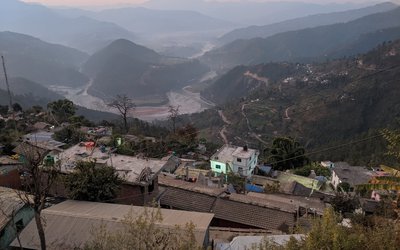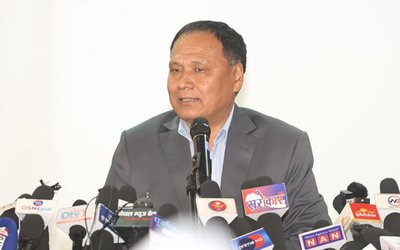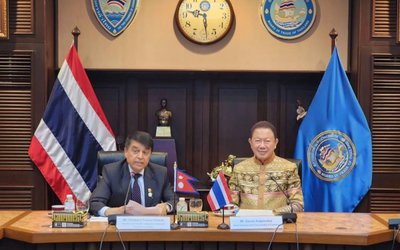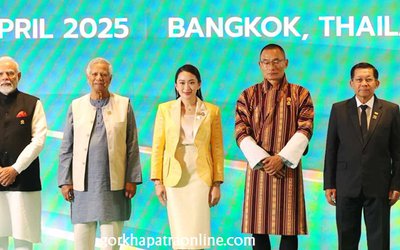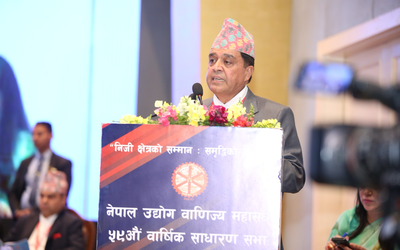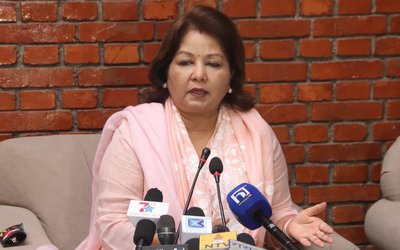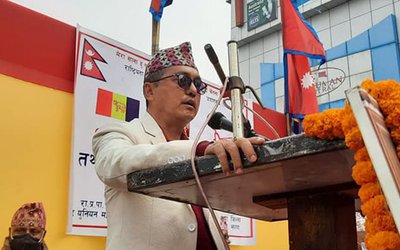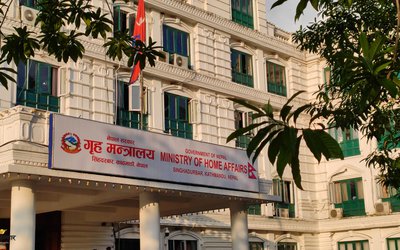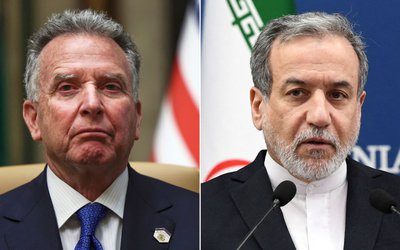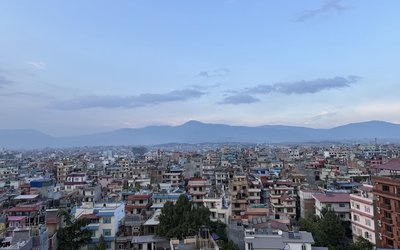
Although Indian Power Ministry’s recent decision to allow Nepal to export 39 MW of electricity to India is a peanut, this decision opens a new practice of trade. From exchange based agreement, Nepal and India have now entered into electricity trade. In this term, the decision is significant.
Trade is always a lengthy and complex process which involves many core interests and other bargaining points for both the countries. Nepal-India electricity trade is also not different.
According to dictionary, trade broadly refers to the exchange of goods and services, most often in return for money. Trade may take place within a country, or between trading nations. After getting access, Nepal can now seek more market on the basis of demand in Indian market and production in the country.
With growing electricity supply crunch in India, Nepalese surplus electricity could get access to broader market now. However, it was not possible through exchange.
For decades, Nepal-India exchanged electricity on the basis of exchange agreement which has limited scope. However, the recent decision of India allowing Nepalese surplus electricity to India is very small in volume but it is a breakthrough. India agreed to allow Nepalese electricity in the Indian market in competitive prices.
India opened its power exchange market to Nepal only for buying electricity in April. Officials said it took four years for India to open its power exchange market to Nepal.

Some Nepalese critic termed the recent decision of India is no more than India’s continual policy denying fair deal with Nepal. “Minister Pampha Bhusal hailed this 39 MW export as a ‘kose dhunga’ in Indo-Nepal electricity trading. Some interpret this miniscule 39 MW power import from Nepal’s tiny 1,907 MW system by the 388,134 MW strong India as mere continuation of India’s previous 2016 Guidelines’ policy wherein ‘51% Indian equity holders’ was mandatory for access into Indian market,” writes Shanta Bahadur Pun, former MD of NEA, in his article in New Spotlight. (Read Article The Story Behind: 200/600 MW of Electricity Wasted, No Buyers Yet!)
However, government officials and NEA’s officials dealing with India see the gesture of allowing Nepal’s electricity to trade in India is a leap forward.
“Nepal will sell its surplus electricity to India at a competitive rate after New Delhi allowed the neighboring country to trade its power in the Indian power exchange market,” said Minister Bhusal.
In expressing views, what critics ignore is the essence of trade and its lengthy process of give and take. One has to accept the fact that the trade is not a free lunch but a process of bargain and give and take.
If the current decision of India is taken in real trade term, it opens hope for days to come. The agreement shifting the current pattern of power exchange to power trade is a major achievement for Nepal.
For current policy shift, Nepali and Indian officials spent a lot of time in negotiations. Following an official level meeting last month, India finally allowed Nepal to export its surplus energy in competitive trading.
Following the decision, NEA has started to export 40 MW of electricity to India through Dhalkebar-Mujafarpur Cross Border Transmission line from November 2.
This is the first time Nepal exported electricity to India through this transmission line. Minister Bhusal said that Nepal is expecting to get permission to export electricity generated by 456 MW Upper Tamakosi, 69 MW Marsyangdi and 45 MW Upper Bhotekosi.
NEA has been importing electricity from India as per its demand since last April through the competitive market. Minister Bhusal said that Nepal is the first country in South Asia to export electricity to India. “I would like to thank India for allowing the export of electricity to India,” said Bhusal.
Managing director of NEA Kul Man Ghisng said that this will help end the loss of NEA by exporting the surplus electricity to India. He said that this was possible after holding several rounds of talks at the official levels of the two countries.
Nepal will sell its surplus electricity to India at a competitive rate after New Delhi allowed the neighboring country to trade its power in the Indian power exchange market. The Energy Exchange under India's Power Ministry granted permission to Nepal after persistent lobbying from Kathmandu, as NEA is now in a position to sell its surplus energy.
Gokarna Raj Pantha, joint spokesperson for the ministry, said that NEA would now be able to participate in an auction in the Indian Energy Exchange everyday to sell power. This transmission has until now been used just to import power as Nepal had already received permission for purchasing and importing power in the Indian Energy Exchange.
The NEA has been importing power through Indian Energy Exchange at competitive rate since last April 30 as per need. After obtaining the approval, the power trade between Nepal and India has entered a new phase.
According to Madhu Bhetuwal, spokesperson for the Energy Ministry, the Indian authority has also been studying Nepal's proposal to sell the electricity generated by two other power projects, including the 456MW Upper Tamakoshi Hydropower Project.
Nepal became an energy surplus country ever since the 456MW Upper Tamakoshi Hydropower Project came into full operation in August. According to the NEA, Nepal now has surplus power even during peak hours, usually between 7 and 8 pm. The peak hour demand stands at 1,500MW. The country is currently producing 2,000MW of electricity, of which 1,900MW is generated from hydropower projects.
Nepal, until 2017, was a power starved nation facing outages of up to 18 hours a day. Now it has surplus electricity.
According to the authority, Nepal now has surplus power even during peak hours, usually between 7 pm and 8 pm. The peak hour demand stands at 1,500MW. The country is currently producing 2,000MW of electricity a day and of that, 1,900MW is generated from hydropower projects.
MD Ghising, managing director of the authority, said only 900 MW-1,100 MW is consumed at night when there is low demand for power. In the day, 1,200MW-1,300MW is consumed when daytime demand is the least.
MD Ghising said that the the wastage of electricity in monetary terms was around Rs (Nepalese Rupee) 1.8 billion in the last month and a half, if calculated at an average selling price of Rs.9.5 per unit.
Although it is in limited volume, Nepal is the first among all of India’s neighbors to participate in the Indian Energy Exchange (IEX). The recent decision could open Indian market to trade Nepal’s electricity. This is what is important for Nepal.
- NEPAL-THAILAND: Joint Business Council
- Apr 13, 2025
- BIMSTEC SUMMIT: Nepal’s Stand
- Apr 11, 2025
- IME GROUP: Expands Into Paper Industry
- Mar 24, 2025
- CPN UML: Instigated By India
- Mar 23, 2025
- ADB’S CHIEF ECONOMIST: Nepal Reduces Poverty
- Mar 11, 2025
